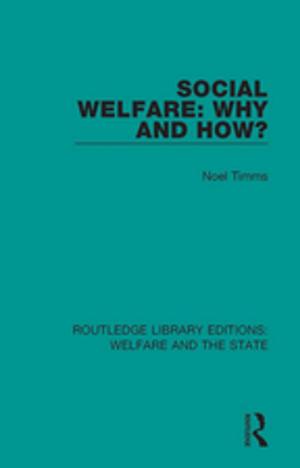Leader Symbols and Personality Cult in North Korea
The Leader State
Nonfiction, Social & Cultural Studies, Political Science, Politics, Leadership, History & Theory, Government| Author: | Jae-Cheon Lim | ISBN: | 9781317567400 |
| Publisher: | Taylor and Francis | Publication: | March 24, 2015 |
| Imprint: | Routledge | Language: | English |
| Author: | Jae-Cheon Lim |
| ISBN: | 9781317567400 |
| Publisher: | Taylor and Francis |
| Publication: | March 24, 2015 |
| Imprint: | Routledge |
| Language: | English |
The legitimacy of the North Korean state is based solely on the leaders’ personal legitimacy, and is maintained by the indoctrination of people with leader symbols and the enactment of leadership cults in daily life. It can thus be dubbed a "leader state". The frequency of leader symbols and the richness and scale of leader-symbol-making in North Korea are simply unrivalled. Furthermore, the personality cults of North Korean leaders are central to people’s daily activity, critically affecting their minds and emotions. Both leader symbols and cult activities are profoundly entrenched in the institutions and daily life, and if separated and cancelled, the North Korean state would be transformed.
This book analyses North Korea as a "leader state", focusing on two elements, leader symbols and cult activities. It argues that these elements have been, and continue to be, the backbone of North Korea, shaping North Korean culture. To reveal the "leader state" character, the book specifically examines North Korea’s leadership cults, its use of leader symbols in these cults, and the nature of the symbolism involved. How has the North Korean state developed the cult of the Kim Il Sung family? How does the state use leader symbols to perpetuate this cult? How has the state developed myths and rituals that sustain the cult in daily life? What leader images has state propaganda manufactured? How does the state’s manipulation of leader symbols affect the symbolism that is assigned to the leader’s actions? In answering these questions, this book sheds new light on the strength and resilience of the North Korean state, and shows how it has been able to survive even the most difficult economic period of the mid-1990s.
Leader Symbols and Personality Cult in North Korea will be essential reading for students and scholars of North Korea, Korean politics, Asian politics, political sociology and visual politics.
The legitimacy of the North Korean state is based solely on the leaders’ personal legitimacy, and is maintained by the indoctrination of people with leader symbols and the enactment of leadership cults in daily life. It can thus be dubbed a "leader state". The frequency of leader symbols and the richness and scale of leader-symbol-making in North Korea are simply unrivalled. Furthermore, the personality cults of North Korean leaders are central to people’s daily activity, critically affecting their minds and emotions. Both leader symbols and cult activities are profoundly entrenched in the institutions and daily life, and if separated and cancelled, the North Korean state would be transformed.
This book analyses North Korea as a "leader state", focusing on two elements, leader symbols and cult activities. It argues that these elements have been, and continue to be, the backbone of North Korea, shaping North Korean culture. To reveal the "leader state" character, the book specifically examines North Korea’s leadership cults, its use of leader symbols in these cults, and the nature of the symbolism involved. How has the North Korean state developed the cult of the Kim Il Sung family? How does the state use leader symbols to perpetuate this cult? How has the state developed myths and rituals that sustain the cult in daily life? What leader images has state propaganda manufactured? How does the state’s manipulation of leader symbols affect the symbolism that is assigned to the leader’s actions? In answering these questions, this book sheds new light on the strength and resilience of the North Korean state, and shows how it has been able to survive even the most difficult economic period of the mid-1990s.
Leader Symbols and Personality Cult in North Korea will be essential reading for students and scholars of North Korea, Korean politics, Asian politics, political sociology and visual politics.















